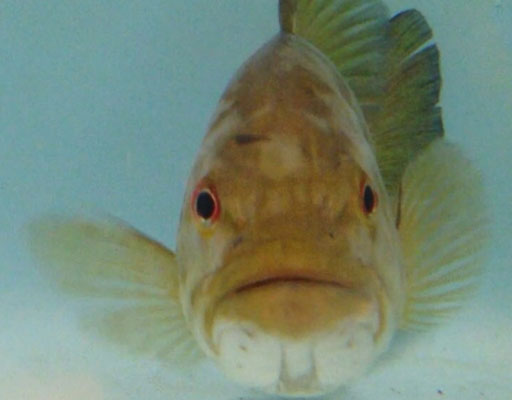
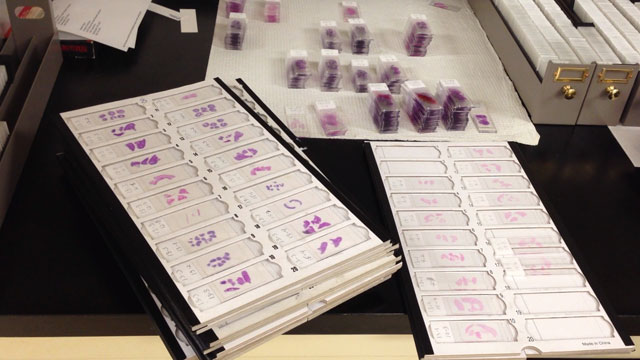
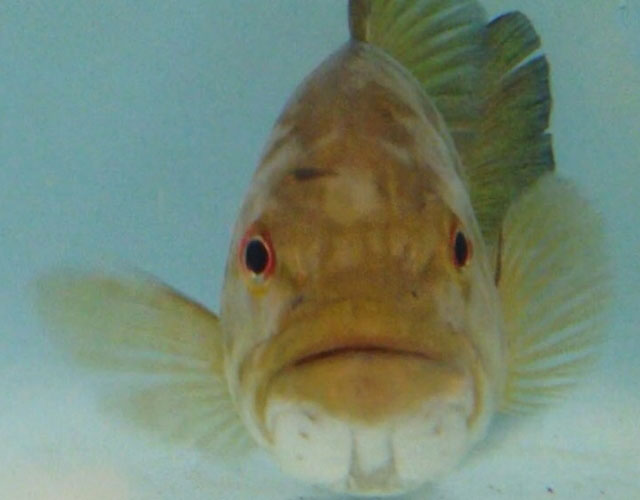

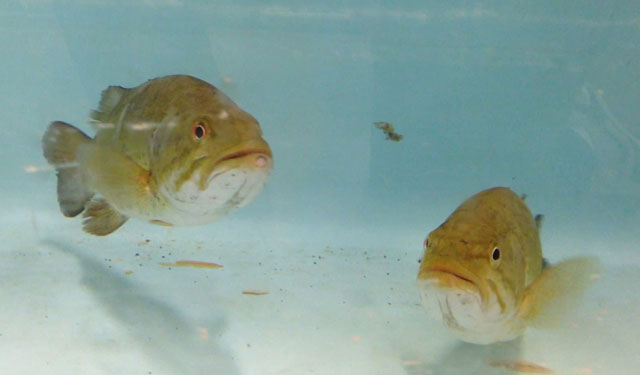
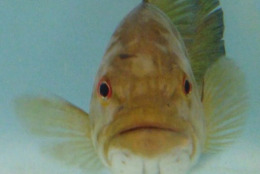
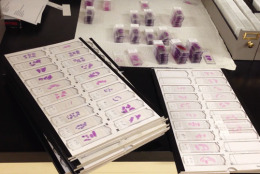
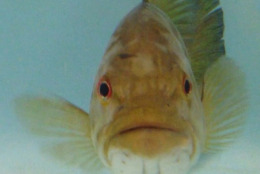
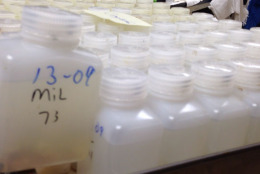
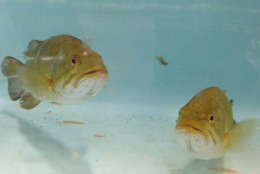
KEARNEYSVILLE, W.Va. – Ten years after the discovery of the first intersex fish in the Potomac River, leading researchers are closing in on the chemicals and sources producing fish with immature eggs in the sex organs of male smallmouth- and largemouth bass.
“What we’ve found in the past few years is the presence of certain chemicals and hormones that are typically associated with agricultural activities are associated with the severity of intersex in smallmouth bass,” says research biologist Luke Iwanowicz, with the U.S. Geological Survey’s National Fish Health Research Laboratory.
In a January 2013 study, the USGS researchers found a high correlation between intersex fish and the herbicide atrazine, and a pesticide called trans-Nonachlor. Intersex fish have both male and female characteristics.
“It’s not really clear where some of these chemicals are coming from, but likely sources are manures that are being spread on field, and livestock, which have free access to some of the small tributaries,” Iwanowicz says.
“It’s not uncommon to see cows standing in the water.”
Scientists have determined that intersex fish are widespread across the watershed of the Chesapeake Bay, and they’ve been working for the last decade to find the source of their mutations.
“We’d really like to find the compounds that are responsible and where they’re coming from,” Iwanowicz says.
The USGS was the first to discover intersex fish in the south branch of the Potomac and Shenandoah Rivers in 2003, discovered by research led by Dr. Vicki Blazer.
WTOP EXTRA: Researcher Luke Iwanowicz talks about the investigation into the mutant fish:
Blazer’s team estimates the intersex condition occurs in 80 percent to100 percent of male fish in the Shenandoah River and up to 60 percent in the Potomac River. The rivers intersect at nearby Harpers Ferry, W.Va.
The sexual abnormalities are imperceptible to the naked eye. Scientists can only determine a fish is intersex after a necropsy, when tissues are processed for microscopic analysis.
Researchers don’t believe farms with livestock are the only ones contributing to the problem.
“We certainly don’t grow as much corn as they do in the Midwest. But atrazine — which is commonly used with the growth of corn — is showing up in a lot of our water samples and is correlating with intersex,” Iwanowicz says.
Atrazine is widely used as a herbicide to eradicate weeds in major crops.
The compounds found in the waters of the Potomac River, the major source of drinking water for the Washington metro area, may cause more problems than just intersex fish, Iwanowicz says.
“We’ve also been observing a higher-than-expected incidence of fish lesions and fish kills in these fish,” Iwanowicz says.
“There very likely could be an association between the estrogens in the water, other contaminants, and the disease in the fish,” said Iwanowicz.
While earlier hypotheses considered the flushing of unwanted pharmaceuticals to be responsible for the intersex condition, Iwanowicz says current research is giving that theory less credence.
As researchers close in on the source of the intersex problem, Iwanowicz says it’s still not clear why the intersex problem is largely only be observed in smallmouth bass, some largemouth bass and sunfish.
“That’s actually one reason why we’re doing some of this laboratory work … to try to figure out why there may be a difference in sensitivity of these species,” Iwanowicz says.
Related Stories:
- Fisherman’s perspective: Effect of snakeheads and Potomac River’s health (Video)
- How Blue Plains treats wastewater
- Anacostia River: Ugly duckling or blossoming flower? (Video)
- Troubled Waters: About this series
- More Troubled Waters
Follow @WTOP on Twitter.







